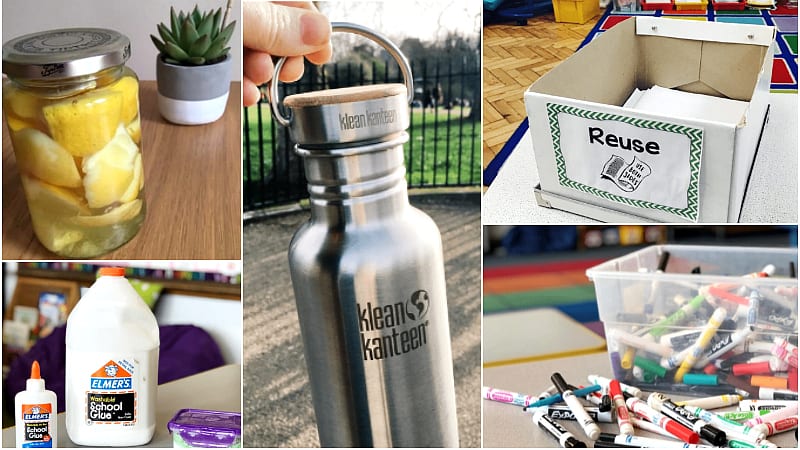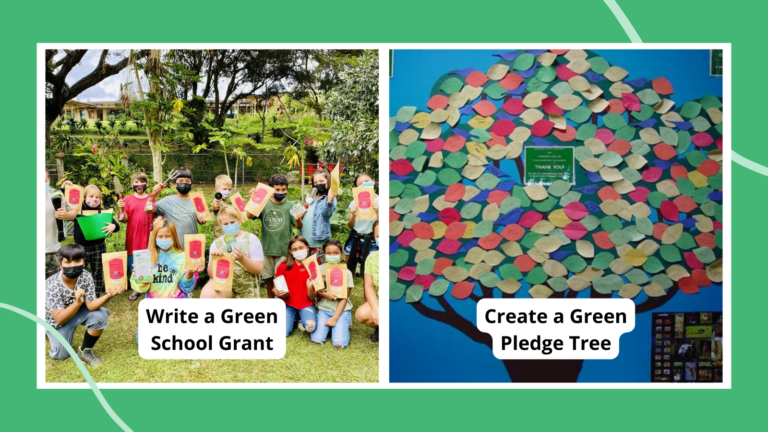Sustainability and being green aren’t just buzzwords or passing trends—they are the future. And the classroom is a great place to start preparing for it.
Whether you’re looking for Earth Month ideas, hoping to reduce your carbon footprint, or trying to achieve a zero-waste classroom, we have sustainable swaps for you. The teachers featured below are all making amazing strides to reduce their classroom’s carbon footprint. We hope they inspire you to try a few swaps yourself.
1. Instead of tossing old dry-erase markers, buy refillable ones.
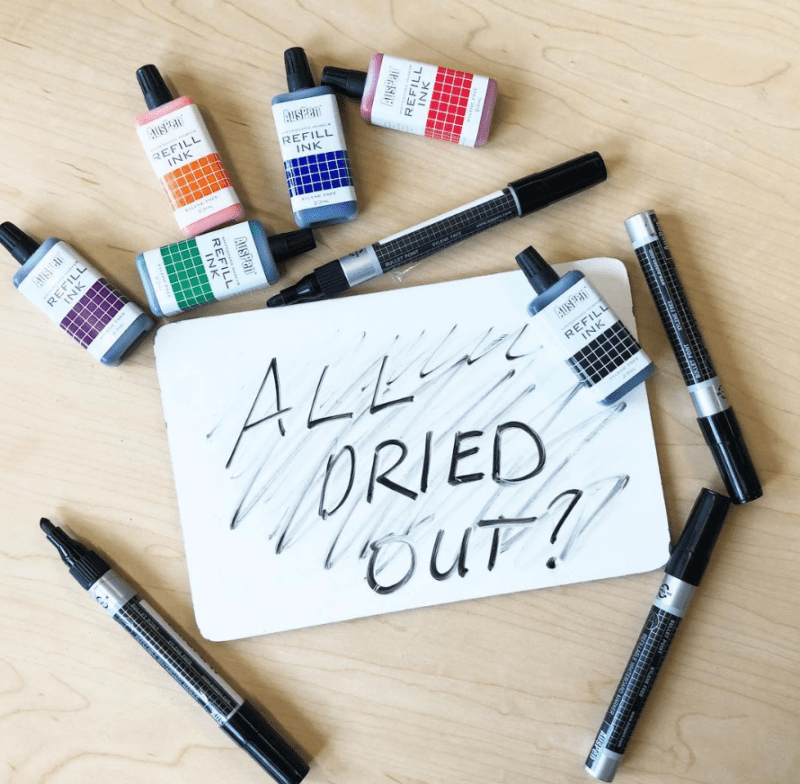
Source: Zero Waste Classroom
If you want to reduce the number of plastic containers your classroom uses, then look into dry-erase markers that you can refill. Ms. Heidi of Zero Waste Classroom has reduced her classroom’s carbon footprint with this idea. They work great.
2. Instead of tossing your dried-up markers, recycle them.
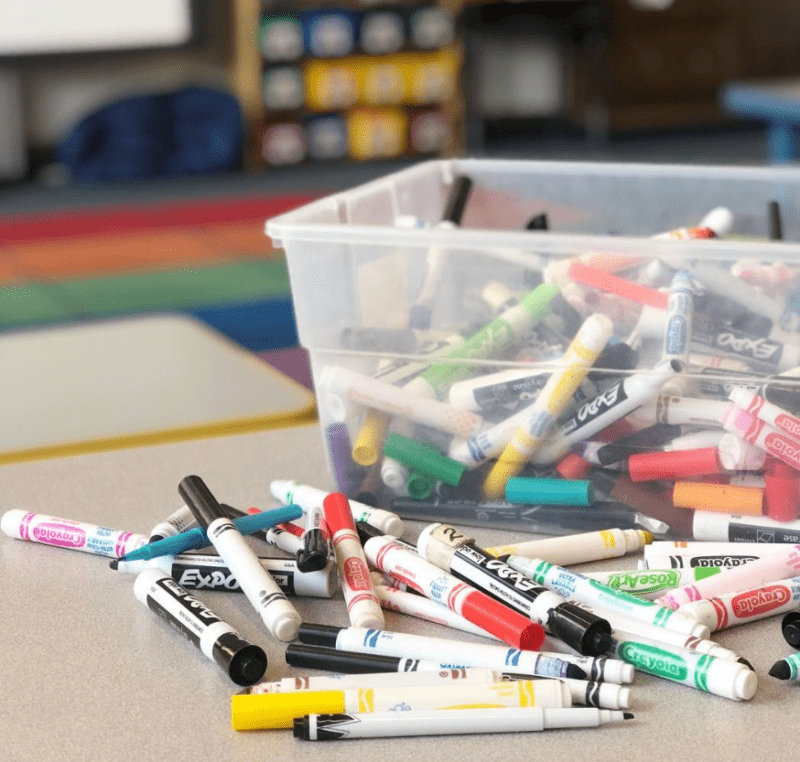
Source: Zero Waste Classroom
Speaking of markers, did you know about the Crayola recycling program, where you can send in old and dried-up markers? Learn more about it here. Thank you for the tip, Zero Waste Classroom.
[contextly_auto_sidebar]
3. Instead of paper towels, try using fabric scraps.
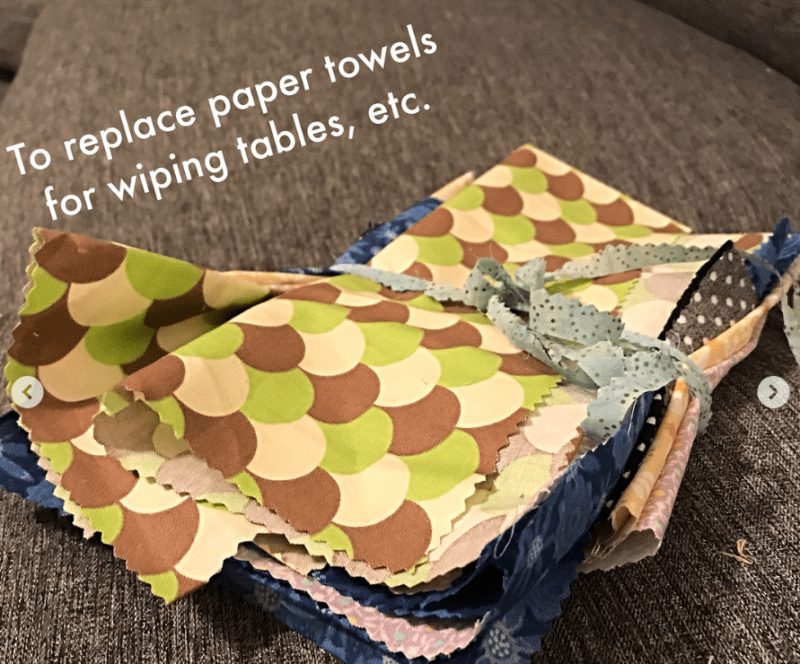
Source: Mrs. Mahaffey’s
Mrs. Mahaffey is a kindergarten teacher, and she put this idea on her Instagram page. She says she uses scraps of material for a lot of things, including for noses (in place of tissue), for clean up, and more.
4. Instead of throwing out old or broken crayons, make new ones.
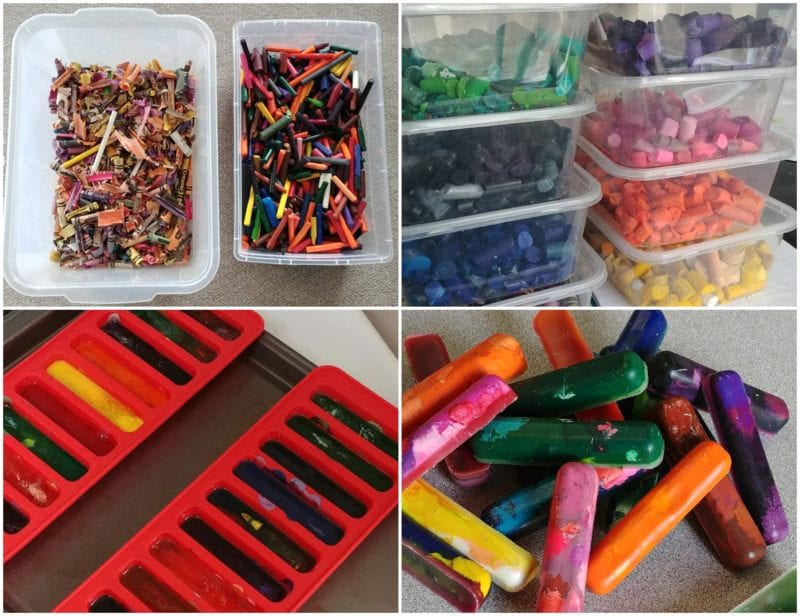
Source: Green Goals
If you’re an elementary teacher, you’re going to see a LOT of broken crayons in a year. If you collect them along the way, then you can make new crayons, like this teacher did.
5. Instead of tossing snack packaging, create a special place to recycle them.
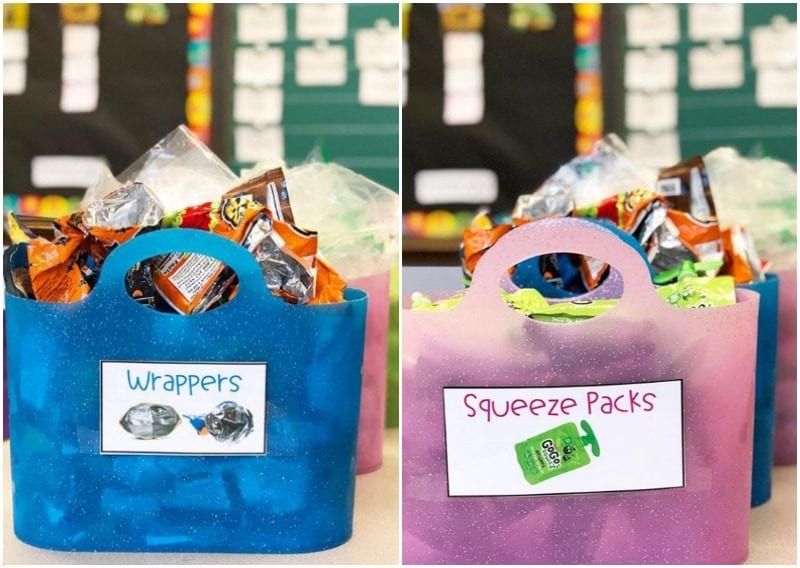
Source: Zero Waste Classroom
Most snacks are packaged similarly, and Ms. Heidi from Zero Waste Classroom wanted to find a way to collect and recycle it. She learned about a program through Terracycle that allows you to send in snack packaging, which they’ll turn into something new. It helped her students become aware of packaging and help give it new life once they were done. Bonus: Students can even bring in their snack waste from home and your classroom can become a community resource for this type of recycling.
6. Instead of always using paper, try cardboard.
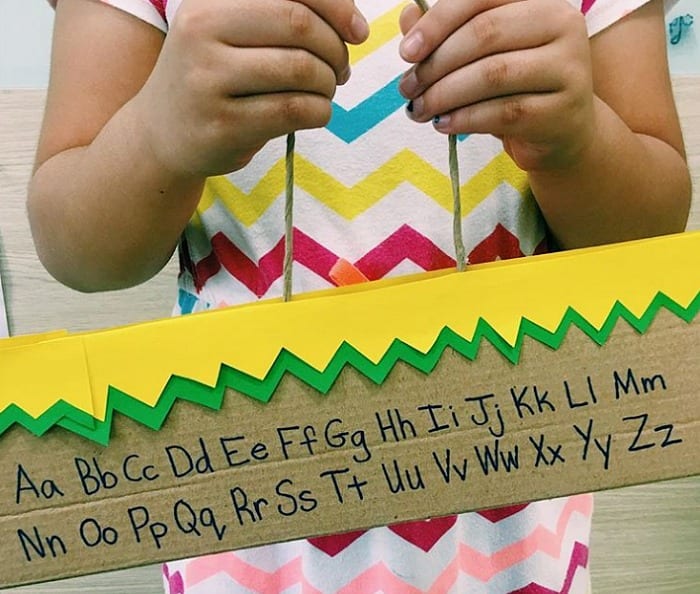
Source: EarthClassroom
Upcycle those cardboard shipping boxes by using it in place of paper. This is a great idea from Katie at EarthClassroom.
7. Instead of buying bulletin board art, make your own.
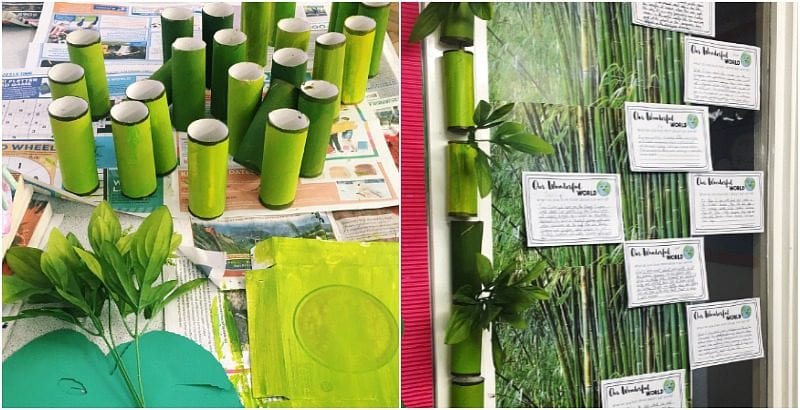
Source: Green Teacher Tess
You can spend so much money on bulletin board supplies. Instead, take a tip from Tess of Green Teacher Tess and make your own instead. She always saves her toilet paper rolls, and there are so many things you can do with them. In this example, she made little bamboo shoots for a display.
8. Instead of plastic drinking containers, try reusable ones.
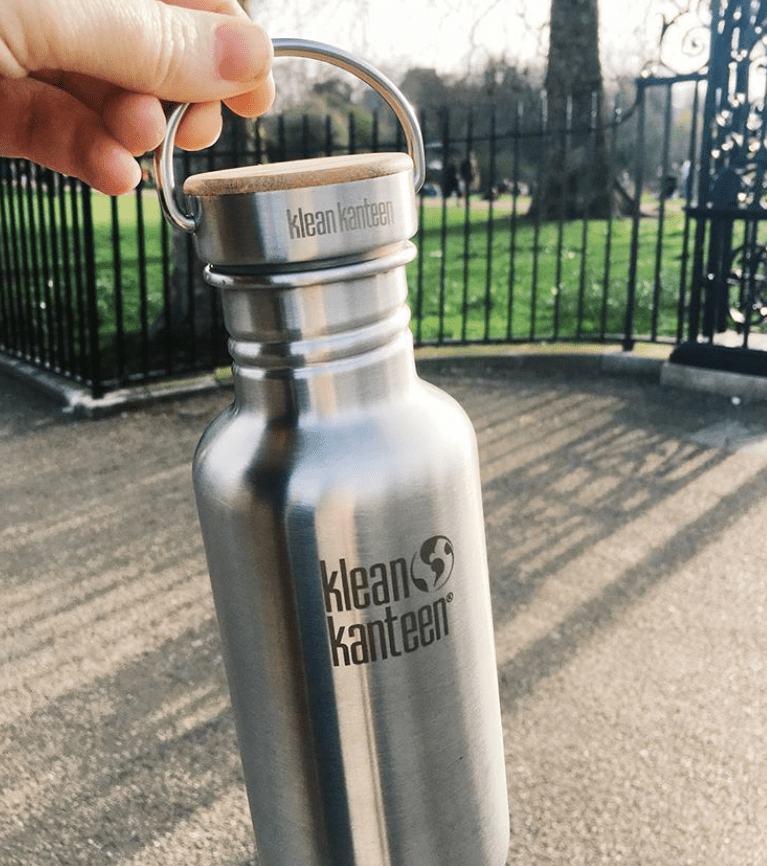
Source: Green Teacher Tess
Here’s another one from Green Teacher Tess, and it’s one we hear from many teachers. Replace or reduce your use of plastic water bottles by using a reusable one instead. This is another great one for teachers to lead by example. You could allow students to bring in a reusable water bottle to have at their desks, too.
9. Instead of laminating everything, use clear page covers.
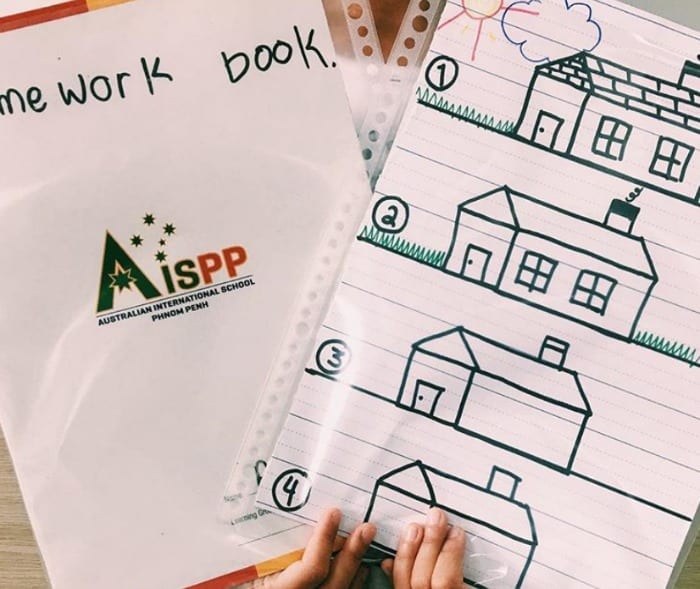
Source: EarthClassroom
Wait a minute. Did we just suggest that teachers stop using the laminator? It’s a pretty bold move, but if you want to have a more sustainable classroom, it’s the way to go. Take inspiration from Katie and her EarthClassroom Instagram account. She strives to go 100 percent unlaminated in her classroom, but she recognizes that supplies need to be durable. So she uses (and reuses) clear sheets like this all year.
10. Instead of using plastic straws, find ones that are compostable.
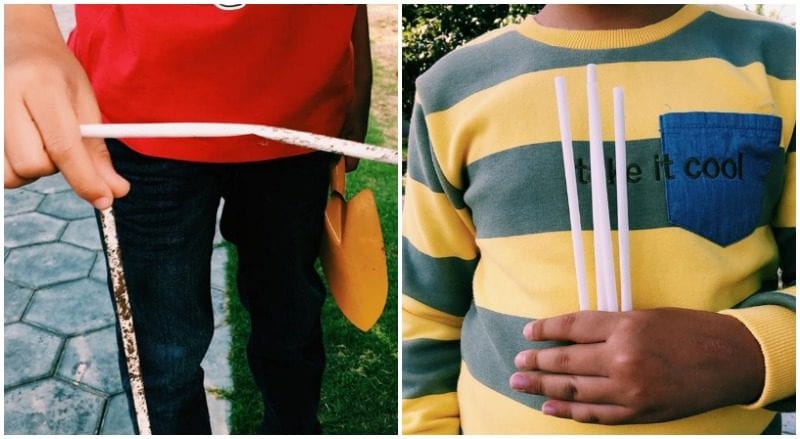
Source: EarthClassroom
Straws can offer great learning opportunities in the classroom. Plus, sometimes you just need a straw. You don’t have to be stuck with just plastic options, though. There are several compostable options, as EarthClassroom mentions. She uses these in her classroom, and when they’re done, they send them to the compost bin at their school.
11. Instead of buying cleaning spray, make your own.
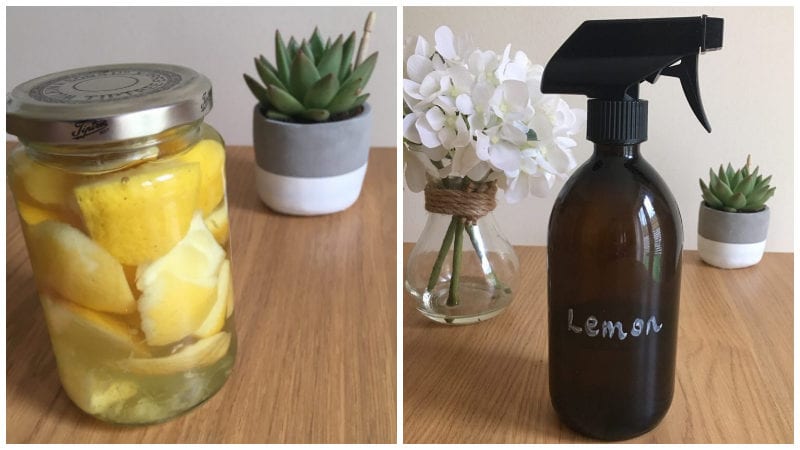
Source: Katie Simplifies
This is an eco-friendly way of bringing clean into your classroom. Plus the smell of lemons is refreshing without being overpowering. Katie uses this for kitchen cleaner, but it would work well for classrooms, too.
12. Instead of buying all-new printer cartridges, exchange them.
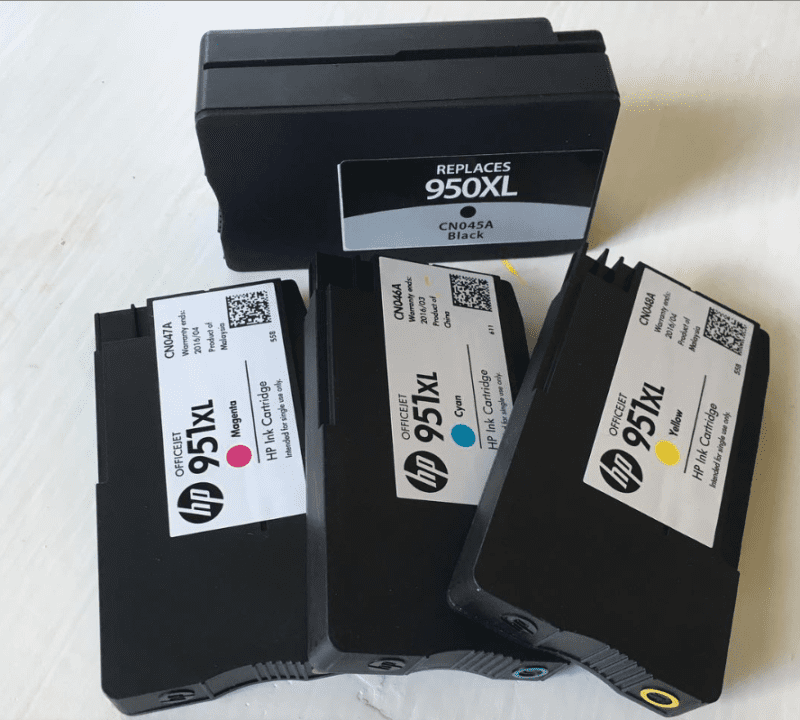
Source: Less Waste SLP
We didn’t even know that exchanging was a thing, but a speech-language pathologist shared this good idea with us. Check with your local print shop to see if they offer something similar. (It can save you a lot of money, too.)
13. Instead of plastic folders, use paper instead.
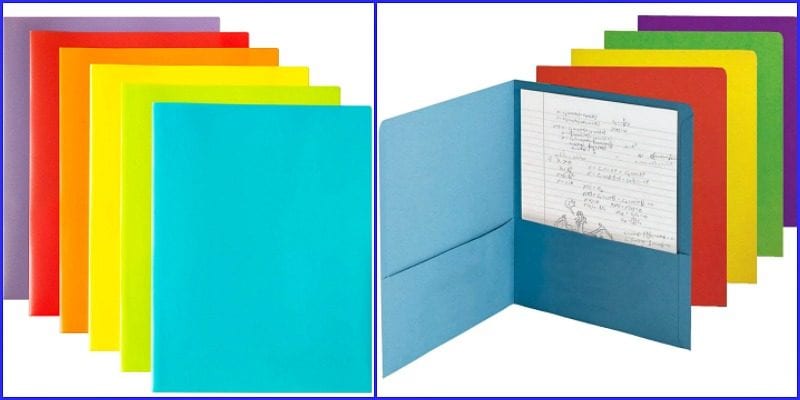
Not only are paper folders a LOT less expensive, they are more eco-friendly, too. Yes, the plastic ones might hold up a little better throughout the year. But if you get your students (and parents) on board, you’ll stand a fighting chance!
14. Instead of glue sticks, use wet glue and sponges.
[embedyt] https://www.youtube.com/watch?v=AyIk0Wq-QBc[/embedyt]
Source: Zero Waste Classroom
You can watch this idea (and others) in action from the above video. The convenience of glue sticks can be great, but Ms. Heidi with Zero Waste Classroom found that her students went through them too quickly. She switched to wet glue, and it’s lasted a lot longer. She also recommends creating your own glue sponge container to extend the life of the supply.
15. Instead of using soap in plastic bottles, make your own long-lasting soap!
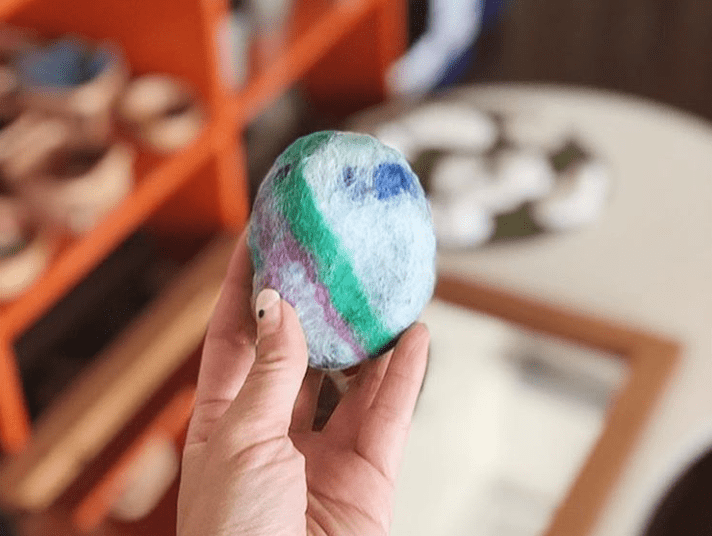
Source: Slowing Down to Zero
This teacher on Instagram was using bar soap in her classroom, but her students would go through it so quickly. So she found a more sustainable option with this felted soap. She says this one soap has lasted four months. Now that’s impressive!
16. Instead of using paper only one time, reuse it again—and again.
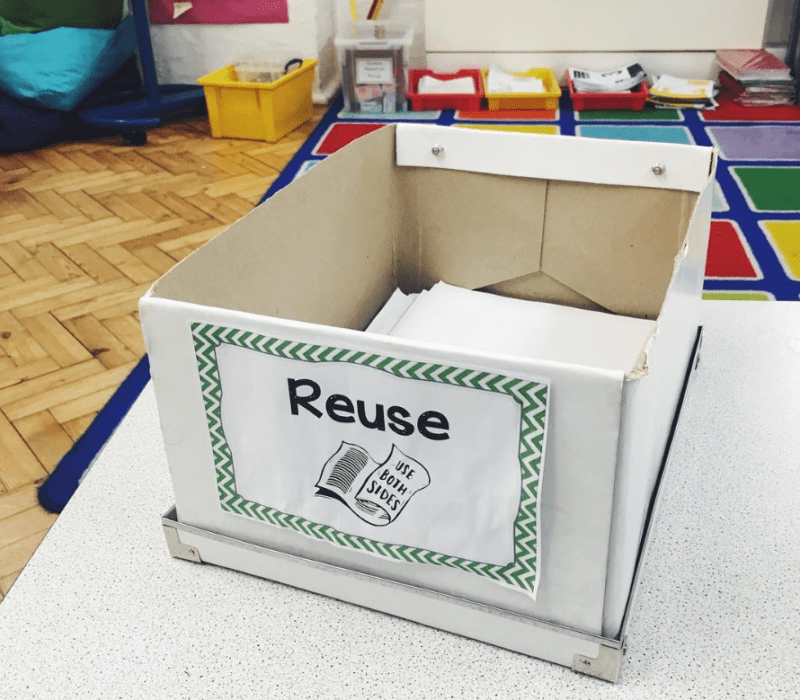
Source: Green Teacher Tess
This is an easy practice to implement. Create a bin, like Green Teacher Tess did, to collect papers that can be reused. Remind your students regularly that they can—and should—use the scrap bin before opting for a fresh sheet.
17. Instead of plastic snack bags, try reusable ones.
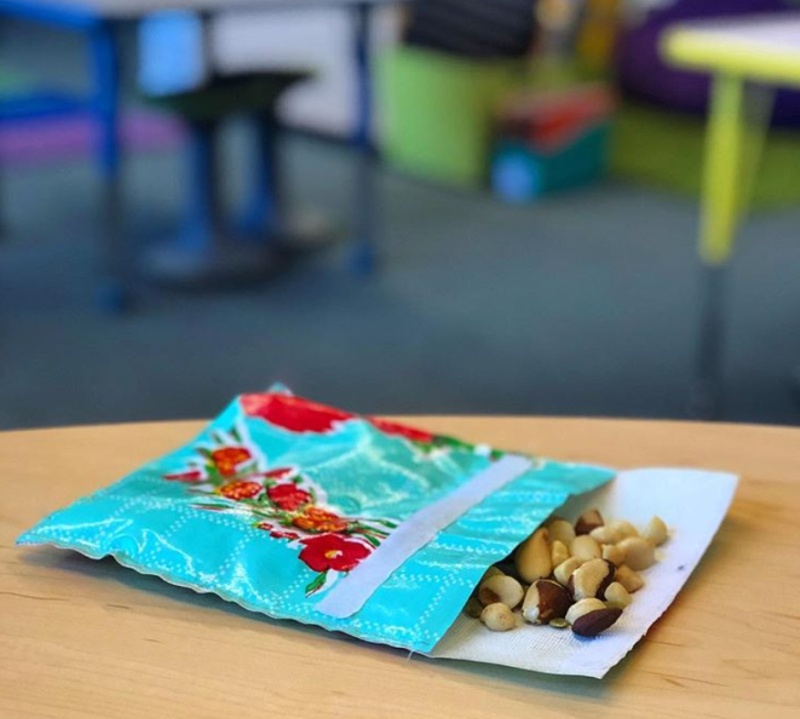
Source: Zero Waste Classroom
Ms. Heidi from Zero Waste Classroom wants to be a role model for her students, which is why she brings her snacks in this reusable bag. She says her students definitely notice. She made this one, but she also recommends using a simple jar as well. Thanks for the idea!
18. Instead of your usual party, challenge your class to have a zero-waste party.
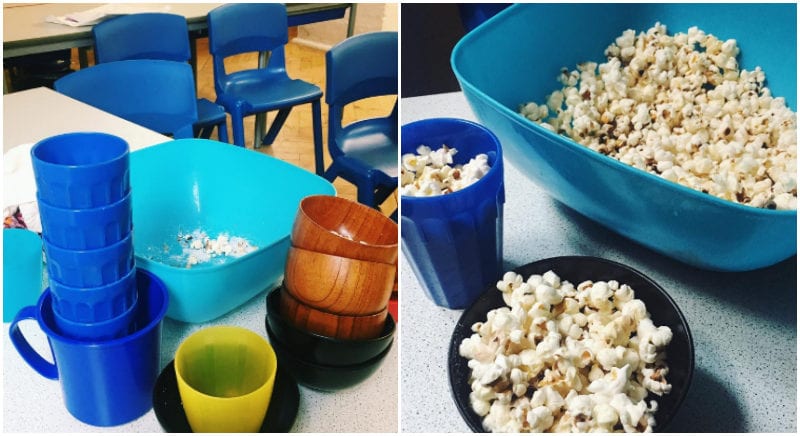
Source: Green Teacher Tess
This isn’t going to be easy, but it would be an awesome challenge to try to accomplish with your students. Plus, it would be a perfect Earth Month challenge. Be inspired by Green Teacher Tess.
19. Instead of paper plates and cups, try reusable ones instead.
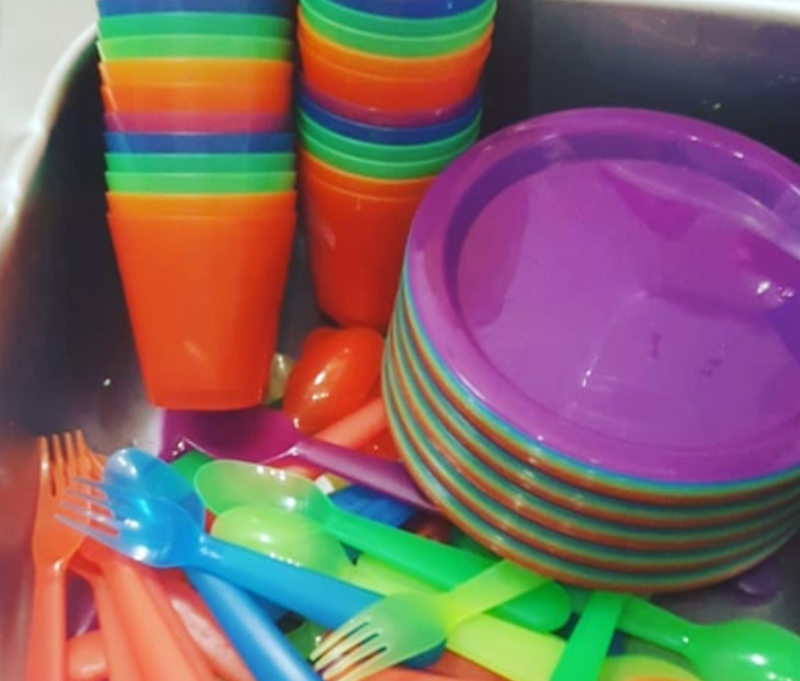
Source: Ms. Gentles
This one can go right along with the zero-waste classroom party challenge. If you invest in reusable materials at the beginning of the school year, like this teacher did, then you can save a lot of time. Plus, it provides great lessons for your students about being responsible. They can help with the washing and putting away!
20. Instead of only tackling sustainability during Earth Month, bring it into lessons all year long.
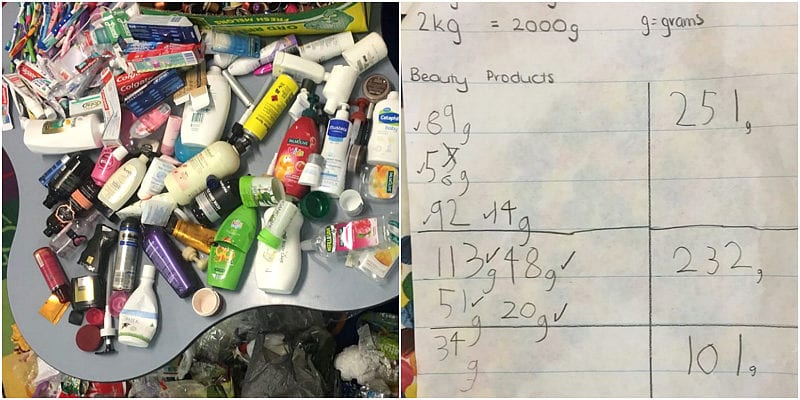
Source: Change My Habits
This teacher not only collects soft plastics to be recycled on behalf of her families, but she also turns collecting into a math lesson. Check out her idea for using it for addition, patterning, sorting, measuring, and more.
21. Instead of working on sustainability on your own, spread the word.
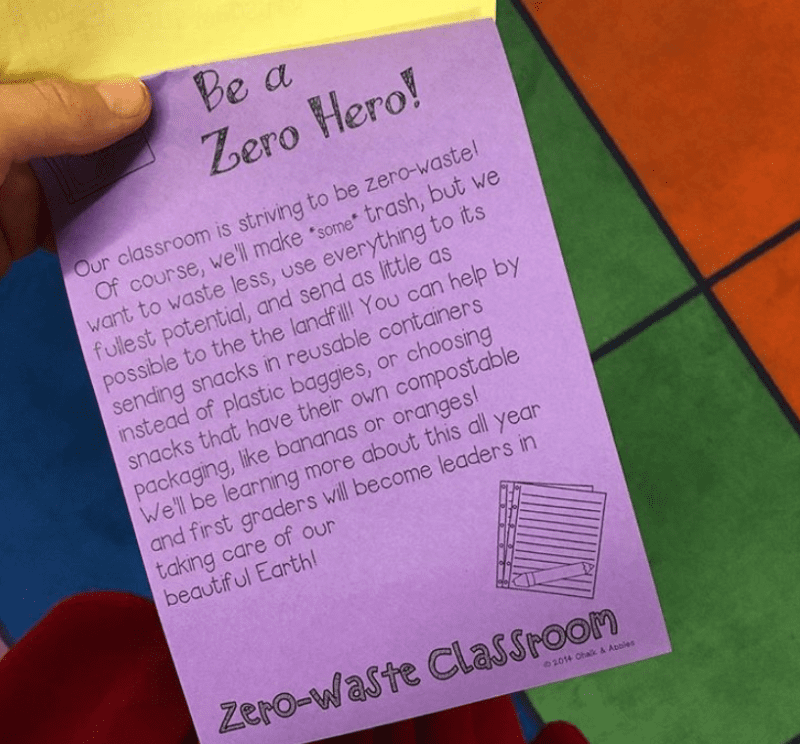
Source: Zero Waste Classroom
Here’s one more from Ms. Heidi. She gets her students and parents involved by proudly telling others that she’s a zero-waste classroom. This is a simple note she sends home with her first graders. By doing this, it helps her students feel like they’re all working together.
22. Instead of making it a classroom initiative, get the whole school involved.
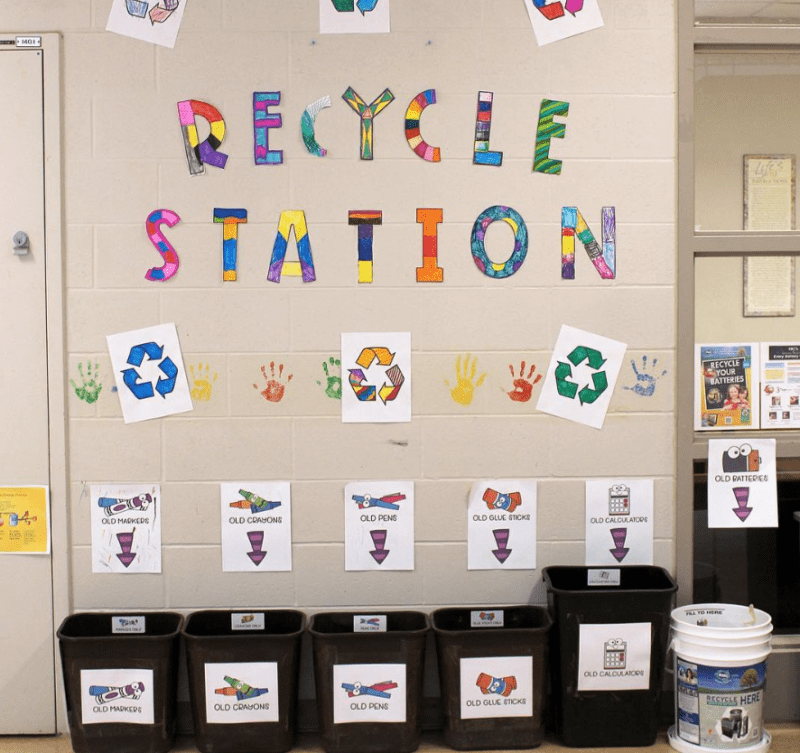
Source: Junior EE
We love this eco club in Canada because they really have worked to get their entire school involved in their recycling efforts. The idea of setting up recycling in a central location can really boost efforts.
What are your best ideas for reducing the carbon footprint in your classroom? Come and share in our WeAreTeachers HELPLINE group on Facebook.
Plus, more ways to increase recycling in your classroom.

